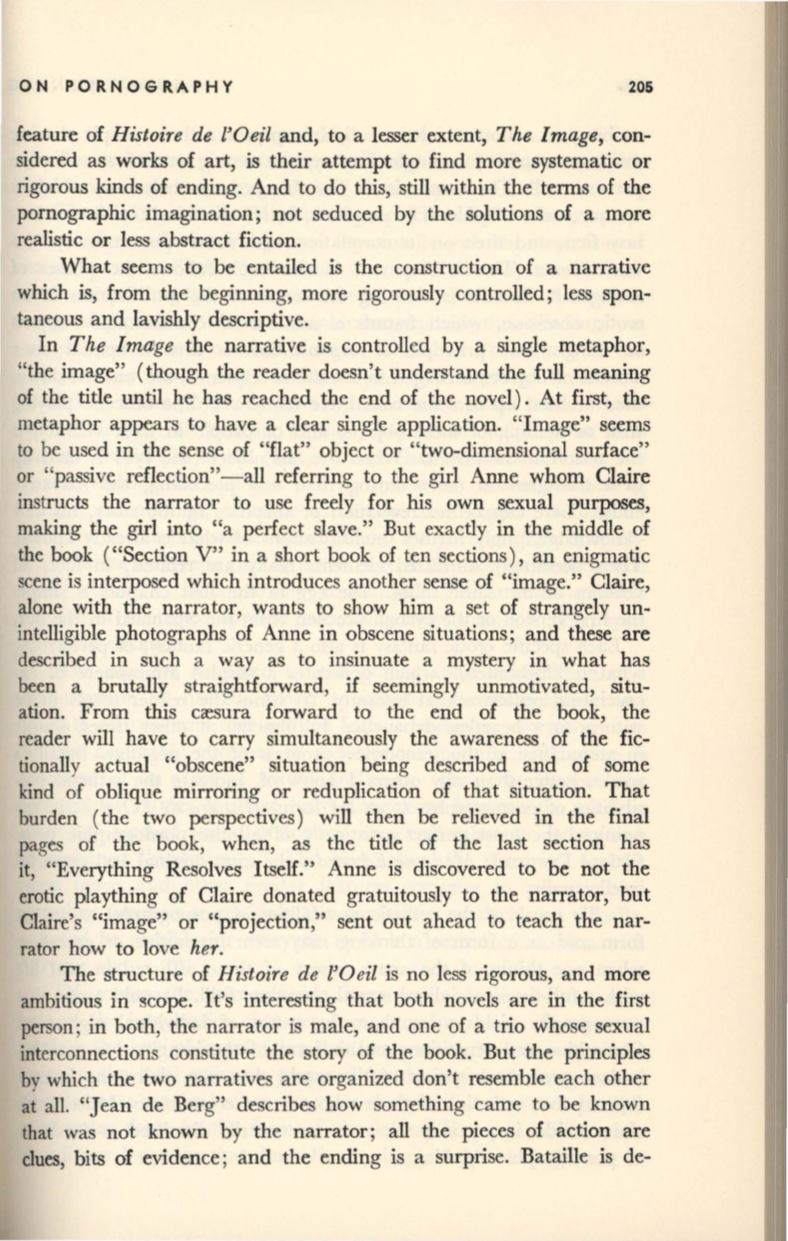
ON PORNOGRAPHY
205
feature of
Histoire de l'Oeil
and, to a lesser extent,
The Image,
con–
sidered as works of art,
is
their attempt to find more systematic or
rigorous kinds of ending. And to do this, still within the terms of the
pornographic imagination; not seduced by the solutions of a more
realistic or less abstract fiction.
What seems to be entailed is the construction of a narrative
which
is,
from the beginning, more rigorously controlled; less spon–
taneous and lavishly descriptive.
In
The Image
the narrative is controlled by a single metaphor,
"the image" (though the reader doesn't understand the full meaning
of the title until he has reached the end of the novel). At first, the
metaphor appears to have a clear single application. "Image" seems
to be used in the sense of "flat" object or "two-dimensional surface"
or "passive reflection"-all referring to the girl Anne whom Claire
instructs the narrator to use freely for his own sexual purposes,
making the girl into "a perfect slave." But exactly in the middle of
the book ("Section V" in a short book of ten sections), an enigmatic
scene is interposed which introduces another sense of "image." Claire,
alone with the narrator, wants to show him a set of strangely un–
intelligible photographs of Anne in obscene situations; and these are
described in such a way as to insinuate a mystery in what has
been a brutally straightforward, if seemingly unmotivated, situ–
ation. From this cresura forward to the end of the book, the
reader will have to carry simultaneously the awareness of the fic–
tionally actual "obscene" situation being described and of some
kind of oblique mirroring or reduplication of that situation. That
burden (the two perspectives) will then be relieved in the final
pages of the book, when, as the title of the last section has
it, "Everything Resolves Itself." Anne is discovered to be not the
erotic plaything of Claire donated gratuitously to the narrator, but
Claire's "image" or "projection," sent out ahead to teach the nar–
rator how to love
her.
The structure of
Histoire de l'Oeil
is
no less rigorous, and more
ambitious in scope. It's interesting that both novels are in the first
person; in both, the narrator is male, and one of a trio whose sexual
interconnections constitute the story of the book. But the principles
by which the two narratives are organized don't resemble each other
at all. "Jean de Berg" describes how something came to be known
that was not known by the narrator; all the pieces of action are
clues, bits of evidence; and the ending is a surprise. BataiIle is de-


